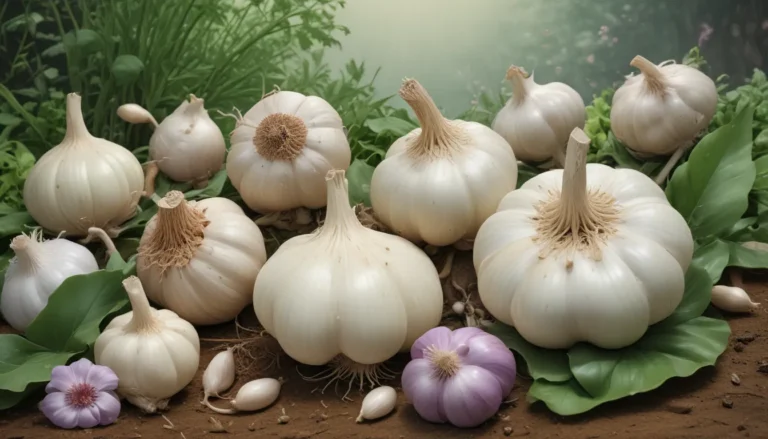The Complete Guide to Growing and Caring for Peacock Flowers

Peacock flowers, also known as the red bird of paradise, are a stunning addition to any garden. With its majestic tree-like appearance and vibrant floral display, this evergreen shrub is a showstopper. In addition to its beauty, peacock flowers are drought-tolerant and attract pollinators, making them a valuable addition to any landscape.
In this comprehensive guide, we’ll cover everything you need to know to successfully grow and care for peacock flowers. From cultivation and history to propagation, growing tips, and pest management, we’ll provide you with all the information you need to cultivate these beautiful plants in your garden.
So, let’s dive in and explore the world of peacock flowers:
What You’ll Learn
- Cultivation and History
- Propagation
- How to Grow
- Growing Tips
- Pruning and Maintenance
- Cultivars to Select
- Managing Pests and Disease
- Best Uses
- Quick Reference Growing Guide
Cultivation and History
Originally hailing from Mexico, Central and South America, and the Caribbean, the red bird of paradise is not related to the traditional bird of paradise plant. It thrives in USDA Hardiness Zones 9 to 11 as a woody evergreen shrub or tree and can act as a returning perennial in Zone 8. The plant first gained European recognition in the early 16th century and has since been cultivated across the globe.
Renamed Caesalpinia pulcherrima in the 17th century, this plant is also known as the “Mexican bird of paradise” and the “Barbados flower fence.” With its vibrant orange-red flowers and dark green foliage, the peacock flower has become a popular ornamental plant in landscaping.
Propagation
Peacock flowers are easily propagated through seed sowing and cuttings. To propagate through seeds, collect ripe seed pods and scarify them to allow for germination. Plant the seeds outdoors or indoors in well-draining soil, and keep them moist until they sprout.
Alternatively, take softwood cuttings in spring or early summer and root them in a tray with well-draining soil. Once rooted, these cuttings can be transplanted into your garden or containers.
How to Grow
When growing peacock flowers, it’s essential to consider their climate and exposure needs. Plant them in full sun to partial shade in USDA Zones 9 to 11 for optimal growth. The plants require well-draining soil and should be watered deeply when the soil becomes dry. Providing the right amount of sunlight, water, and nutrients will help your peacock flowers thrive.
Growing Tips
- The more sun exposure, the better the blooms.
- Well-draining soil is essential.
- Avoid fertilizing with nitrogen.
Pruning and Maintenance
Pruning peacock flowers should be done sparingly to maintain their natural shape. Dead flower heads can be removed to encourage repeat blooming, while regular maintenance, such as mulching and protecting from frost, will keep your plants healthy.
Cultivars to Select
In addition to the standard peacock flower, cultivars like ‘Phoenix’ with yellow blooms are available. These cultivars offer a variety of colors to choose from and can be purchased from tropical nurseries and specialty plant suppliers.
Managing Pests and Disease
While peacock flowers are resistant to deer, they may still face challenges from pests and diseases. Aphids, scale, spider mites, and whiteflies can affect these plants, but proper care and prevention methods can help manage these issues. Sanitary gardening practices can also prevent diseases like Armillaria and root rot, which can be detrimental to peacock flowers.
Best Uses
Peacock flowers are versatile plants that can be used as specimen plants, accents, borders, or in containers. They are both drought and salt-tolerant, making them suitable for a variety of climates. With their dense foliage and vibrant blooms, peacock flowers are an excellent addition to any garden.
Quick Reference Growing Guide
- Plant Type: Woody shrub/small tree
- Flower / Foliage Color: Orange-red, yellow/green
- Native to: Central America, Florida, Mexico, South America, West Indies
- Hardiness (USDA Zone): 9-11 evergreen, 8 (perennial)
- Bloom Time: Year-round in frost-free zones/summer
- Exposure: Full sun
- Spacing: 6-20 feet (5-6 feet screen/hedge)
- Height: 6-20 feet, depending on growing conditions
- Attracts: Bees, butterflies, hummingbirds
- Uses: Accent, border, container, screen, specimen
Growing Peacock Flower: You Don’t Have to Wing It
Cultivating peacock flowers may seem daunting at first, but with the right knowledge and care, you can successfully grow these stunning plants in your garden. From propagation methods to growing tips and pest management, this guide has covered everything you need to know to care for peacock flowers.
So, roll up your sleeves, get your hands dirty, and start growing your very own peacock flowers. And remember, gardening is a learning process, so don’t be afraid to make mistakes and learn from them along the way.
If you have any questions or comments, feel free to leave them in the comments section below. We’re excited to hear about your peacock flower gardening adventures!
For more information on tropical flowers, check out these articles:
- Growing Plumeria: How to Care for Frangipani
- How to Grow and Care for Canna Lilies
- How to Grow Calla Lilies for Easy Sophistication
Remember, providing proper care and attention to your peacock flowers will result in a beautiful and thriving addition to your garden.
*





